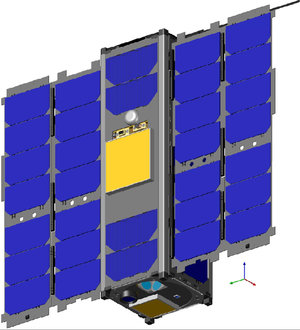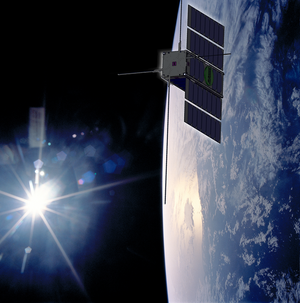Accept all cookies Accept only essential cookies See our Cookie Notice

About ESA
The European Space Agency (ESA) is Europe’s gateway to space. Its mission is to shape the development of Europe’s space capability and ensure that investment in space continues to deliver benefits to the citizens of Europe and the world.
Highlights
ESA - United space in Europe
This is ESA ESA facts Member States & Cooperating States Funding Director General Top management For Member State Delegations European vision European Space Policy ESA & EU Space Councils Responsibility & Sustainability Annual Report Calendar of meetings Corporate newsEstablishments & sites
ESA Headquarters ESA ESTEC ESA ESOC ESA ESRIN ESA EAC ESA ESAC Europe's Spaceport ESA ESEC ESA ECSAT Brussels Office Washington OfficeWorking with ESA
Business with ESA ESA Commercialisation Gateway Law at ESA Careers Cyber resilience at ESA IT at ESA Newsroom Partnerships Merchandising Licence Education Open Space Innovation Platform Integrity and Reporting Administrative Tribunal Health and SafetyMore about ESA
History ESA Historical Archives Exhibitions Publications Art & Culture ESA Merchandise Kids Diversity ESA Brand Centre ESA ChampionsLatest
Space in Member States
Find out more about space activities in our 23 Member States, and understand how ESA works together with their national agencies, institutions and organisations.
Science & Exploration
Exploring our Solar System and unlocking the secrets of the Universe
Go to topicAstronauts
Missions
Juice Euclid Webb Solar Orbiter BepiColombo Gaia ExoMars Cheops Exoplanet missions More missionsActivities
International Space Station Orion service module Gateway Concordia Caves & Pangaea BenefitsLatest
Space Safety
Protecting life and infrastructure on Earth and in orbit
Go to topicAsteroids
Asteroids and Planetary Defence Asteroid danger explained Flyeye telescope: asteroid detection Hera mission: asteroid deflection Near-Earth Object Coordination CentreSpace junk
About space debris Space debris by the numbers Space Environment Report In space refuelling, refurbishing and removingSafety from space
Clean Space ecodesign Zero Debris Technologies Space for Earth Supporting Sustainable DevelopmentLatest
Applications
Using space to benefit citizens and meet future challenges on Earth
Go to topicObserving the Earth
Observing the Earth Future EO Copernicus Meteorology Space for our climate Satellite missionsCommercialisation
ESA Commercialisation Gateway Open Space Innovation Platform Business Incubation ESA Space SolutionsLatest
Enabling & Support
Making space accessible and developing the technologies for the future
Go to topicBuilding missions
Space Engineering and Technology Test centre Laboratories Concurrent Design Facility Preparing for the future Shaping the Future Discovery and Preparation Advanced Concepts TeamSpace transportation
Space Transportation Ariane Vega Space Rider Future space transportation Boost! Europe's Spaceport Launches from Europe's Spaceport from 2012Latest

Connecting to Solar Orbiter
Thank you for liking
You have already liked this page, you can only like it once!
In this image, ESA’s new Solar Orbiter spacecraft is seen during preparations for a vibration test campaign at the IABG facility in Ottobrunn, Germany, in February 2019.
While the craft is at Ottobrunn, the Solar Orbiter mission control team located at ESA’s ESOC mission control centre in Darmstadt, Germany, is getting ready to establish data links to the satellite.
The live links, dubbed ‘system validation tests’, will see the flight team connect their mission control system to the spacecraft, as they will in future when the control systems on ground ‘talk’ to the spacecraft in orbit via radio signals transmitted by a ground station antenna.
“The prime objective of the system validation tests for any spacecraft is to validate that the mission control system can correctly send and receive telecommands to the satellite,” says ESA’s Jose-Luis Pellon-Bailon.
“The tests also confirm that the spacecraft launch configuration is as expected by the post-launch Flight Control Procedures.”
An initial series of system validation tests were run last summer, when Solar Orbiter was still at its manufacturer, Airbus Defence & Space UK, in Stevenage.
“Since then, it has moved to Ottobrunn where we will run the next series of tests in early May and early August, lasting nine days in total and running around the clock,” says Jose-Luis.
“Solar Orbiter will then move to the US for launch from Cape Canaveral, where we will run a final series of connection tests at the end of November.”
Solar Orbiter will be launched in February 2020 to study how the Sun creates and controls the heliosphere, the vast bubble of charged particles blown by the solar wind into the interstellar medium.
How we make a space mission
ESA is Europe’s space agency, enabling its 22 Member States to achieve results that no individual nation can match. ESA combines space mission development with supporting labs, test and operational facilities plus in-house experts covering every aspect of space, supported through the Agency’s Basic Activities.
-
CREDIT
ESA - S. Corvaja -
LICENCE
ESA Standard Licence

OPS-SAT

OPS-SAT

Preparations for Solar Orbiter vibration test

Preparations for Solar Orbiter vibration test















 Germany
Germany
 Austria
Austria
 Belgium
Belgium
 Denmark
Denmark
 Spain
Spain
 Estonia
Estonia
 Finland
Finland
 France
France
 Greece
Greece
 Hungary
Hungary
 Ireland
Ireland
 Italy
Italy
 Luxembourg
Luxembourg
 Norway
Norway
 The Netherlands
The Netherlands
 Poland
Poland
 Portugal
Portugal
 Czechia
Czechia
 Romania
Romania
 United Kingdom
United Kingdom
 Slovenia
Slovenia
 Sweden
Sweden
 Switzerland
Switzerland

























